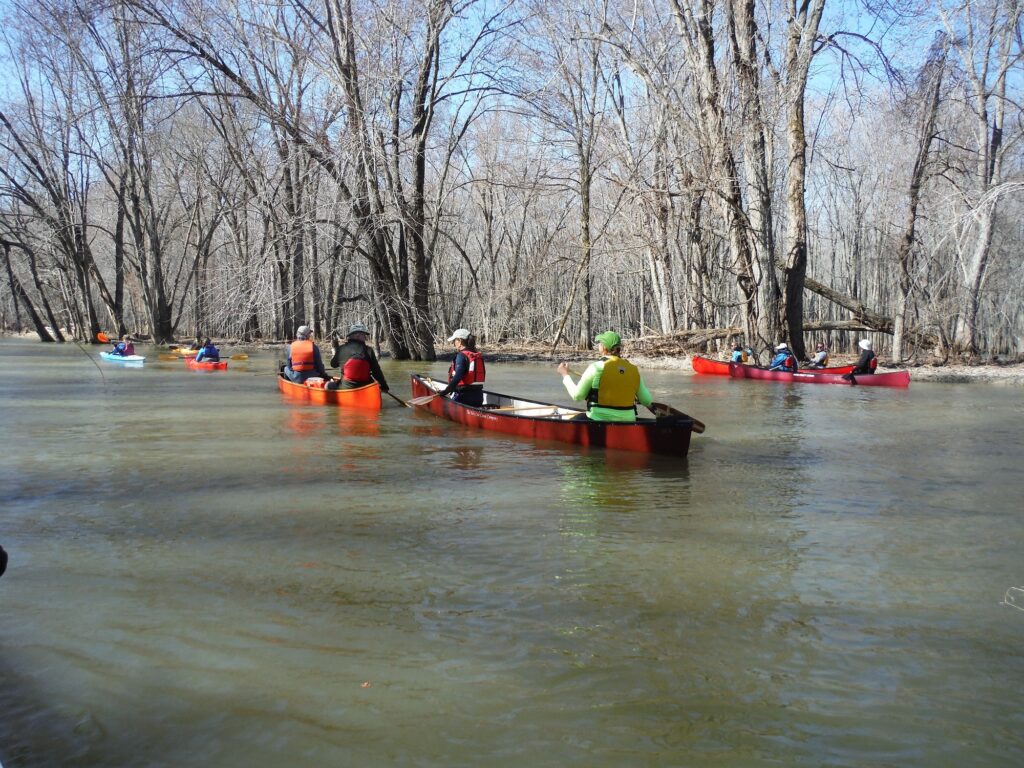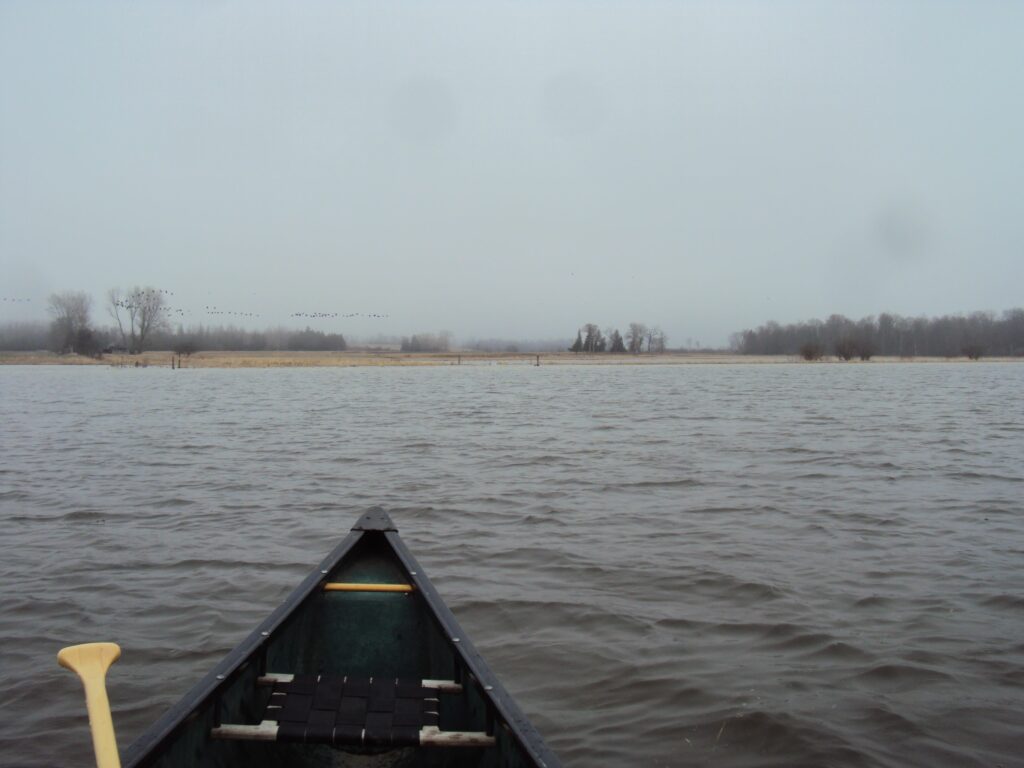Minesing Paddle Safety
Know your limit
Minesing Wetlands is not suitable for those who have little to no paddling experience. If you are a skillful paddler, but do not know your way around Minesing Wetlands, we recommend going with an experienced guide. There are unmarked routes, many unexpected portages, log jams, poison ivy, stinging nettle, and rapidly changing conditions making the trip potentially an unpleasant or even dangerous experience for those who don’t know how to navigate the wetlands. It is your responsibility to be prepared for the unexpected.
Organizations such as the Barrie Canoe and Kayak Club and the Friends of the Minesing Wetlands lead paddle trips into the wetlands using guides who know Minesing Wetlands well. There are other local tour guides who will also provide this service.
Paddling

Rescues in Minesing Wetlands
When visiting Minesing Wetlands, it is your responsibility to make sure you are prepared. Every year, first responders, including the Ontario Provincial Police, rescue unprepared visitors from Minesing Wetlands.
These rescues can be complex, expensive, and time consuming. First responders are putting themselves at risk every time they attempt a rescue in Minesing Wetlands.
Paddlers need to be aware that they may be responsible for paying the cost of their rescue.
Many people get lost in the Willow Creek Marsh as it becomes lake-like and you can lose the creek channel.
Changing Conditions
Changing weather, particularly in the spring and fall, can turn a glorious day into a cold and wet experience very quickly. Make sure you check the weather forecast before you head out. Bring a full change of clothes in a dry bag and dress for the weather.
Calm, well-defined channels can suddenly become an open lake with white caps depending on the amount of rain or snowmelt in the watershed. Water levels can also get so low that paddlers are not able to pass through. This ever-changing landscape makes navigation a challenge.
In the spring, rivers and streams are fast-flowing and cold. There is a significant risk of hypothermia if you fall in. Check the flood conditions before you head out. And remember, there is always another day to go out – if the conditions aren’t right, play it safe and stay home.

Flood conditions can result in Minesing Wetlands becoming an open “lake”.
Paddling Safety
When heading out into Minesing Wetlands, follow good boating safety practices.
You need a sturdy, hard-bottomed boat to head in to Minesing Wetlands. Canoes and kayaks are usually good options. Do not head out into Minesing on a stand-up paddle board or in a blow-up, inflatable boat. Submerged trees and logs may puncture inflatable crafts.
Ensure you have the mandatory marine safety equipment required by Transport Canada.
You should consider carrying additional safety items, including, but not limited to:
-
- spare clothing in a waterproof bag (weather can change without notice, and it’s best to be prepared);
-
- compass and navigation system (GPS), map and knowledge on how to use them;
-
- drinking water and snacks; and
-
- a first aid kit.
Recognize the signs and symptoms of hypothermia.
A successful, safe trip begins with good preparation. Before you leave, run through a pre-departure checklist and be sure to tell others where you are going and what time you expect to return.
